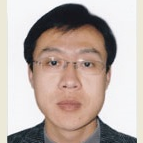Natural Compounds and New Analogs in Chemical Synthesis: A Themed Issue in Honor of Professor Dr. Mark Moloney
A special issue of Molecules (ISSN 1420-3049). This special issue belongs to the section "Organic Chemistry".
Deadline for manuscript submissions: closed (30 November 2023) | Viewed by 24512
Special Issue Editors
Interests: organic synthesis; natural products; beta-dicarbonyls; beta-enaminones
Interests: organic chemistry; medicinal chemistry; drug discovery; oncology; cancer stem cells; photopharmacology; antibacterials; new therapeutic modalities
Special Issue Information
Dear Colleagues,
Molecules is pleased to announce a Special Issue honoring Professor Dr. Mark Moloney, on the occasion of his retirement from Oxford University, for his fruitful career both as a researcher and a brilliant academic mentor. Australian by birth, Mark Moloney completed his undergraduate and graduate studies at the University of Sydney. Having obtained his Ph. D., he moved to Oxford and joined the research group of Professor Sir Jack Baldwin FRS, where he worked on research related to penicillin biosynthesis. This put him on the way to an independent academic career, mainly focused on the natural product-inspired synthesis of functionalized nitrogen heterocycles with an emphasis on antibacterials. To date, he has authored more than 200 research papers and three teaching books. In a demanding scientific field such as organic synthesis, he will be remembered by his students for his human touch and the ability to combine research rigor with a friendly environment in his laboratory.
Much like in life, in chemical synthesis the journey can be more important than the destination – often it is not the target, but the methodology developed along the way, that matters the most. There are countless examples of bioactive molecules and drugs discovered in the pursuit of natural product synthesis. In this issue, we invite contributors to share their own stories of synthesis and bioactive evaluation of natural compounds and new analogs.
It is a pleasure to invite you to submit a manuscript to this Special Issue. Regular articles, communications, and reviews are all welcome.
Dr. Plamen Angelov
Guest Editor Assistant
Dr. Laia Josa-Culleré
Guest Editor Assistant
Dr. Pengfei Yang
Guest Editor
Manuscript Submission Information
Manuscripts should be submitted online at www.mdpi.com by registering and logging in to this website. Once you are registered, click here to go to the submission form. Manuscripts can be submitted until the deadline. All submissions that pass pre-check are peer-reviewed. Accepted papers will be published continuously in the journal (as soon as accepted) and will be listed together on the special issue website. Research articles, review articles as well as short communications are invited. For planned papers, a title and short abstract (about 250 words) can be sent to the Editorial Office for assessment.
Submitted manuscripts should not have been published previously, nor be under consideration for publication elsewhere (except conference proceedings papers). All manuscripts are thoroughly refereed through a single-blind peer-review process. A guide for authors and other relevant information for submission of manuscripts is available on the Instructions for Authors page. Molecules is an international peer-reviewed open access semimonthly journal published by MDPI.
Please visit the Instructions for Authors page before submitting a manuscript. The Article Processing Charge (APC) for publication in this open access journal is 2700 CHF (Swiss Francs). Submitted papers should be well formatted and use good English. Authors may use MDPI's English editing service prior to publication or during author revisions.
Keywords
- natural products
- synthesis
- bioinspired drug design
- bioactivity
- structure–activity relationships
Benefits of Publishing in a Special Issue
- Ease of navigation: Grouping papers by topic helps scholars navigate broad scope journals more efficiently.
- Greater discoverability: Special Issues support the reach and impact of scientific research. Articles in Special Issues are more discoverable and cited more frequently.
- Expansion of research network: Special Issues facilitate connections among authors, fostering scientific collaborations.
- External promotion: Articles in Special Issues are often promoted through the journal's social media, increasing their visibility.
- Reprint: MDPI Books provides the opportunity to republish successful Special Issues in book format, both online and in print.
Further information on MDPI's Special Issue policies can be found here.








